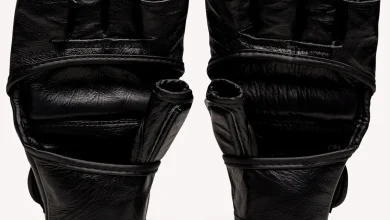1. Introduction
Dermal fillers have become a popular choice for non-surgical cosmetic enhancement, offering solutions for smoothing wrinkles, adding volume, and improving facial contours. One of the most common questions patients have is about how long these fillers last and how their longevity affects the overall cost. This article explores the duration of various types of dermal fillers and examines how this impacts their cost.
2. Types of Dermal Fillers
Dermal fillers come in several formulations, each with its own characteristics and longevity. Understanding these types is essential for evaluating their duration and cost.
2.1. Hyaluronic Acid Fillers
Hyaluronic acid (HA) fillers are the most commonly used type. HA is a naturally occurring substance in the body that helps maintain skin hydration and elasticity. These fillers are often used for adding volume to the cheeks, smoothing out lines around the mouth, and plumping the lips. Popular brands include Juvederm and Restylane.
2.2. Calcium Hydroxylapatite Fillers
Calcium hydroxylapatite (CaHA) fillers are composed of microspheres of calcium carbonate suspended in a gel. This type of filler not only provides immediate volume but also stimulates the body’s own collagen production. Radiesse is a well-known CaHA filler, typically used for deeper lines and volume loss.
2.3. Poly-L-Lactic Acid Fillers
Poly-L-lactic acid (PLLA) fillers are synthetic and stimulate collagen production over time. Sculptra is a common PLLA filler used for treating facial volume loss. Unlike other fillers, PLLA requires a series of treatments for optimal results and gradual improvement.
2.4. Polymethyl Methacrylate (PMMA) Fillers
Polymethyl methacrylate (PMMA) fillers are semi-permanent. They consist of microspheres suspended in a collagen gel. Artefill is a well-known PMMA filler. PMMA fillers provide long-lasting results but are less commonly used due to their permanent nature.
3. Duration of Dermal Fillers
The longevity of dermal fillers varies based on their composition and the area treated.
3.1. Hyaluronic Acid Fillers
Hyaluronic acid fillers typically last between 6 to 18 months. Factors such as the specific product used, the treatment area, and individual metabolism can influence the exact duration. For example, fillers injected into areas with high movement, like the lips, may not last as long as those used in less dynamic areas.
3.2. Calcium Hydroxylapatite Fillers
Calcium hydroxylapatite fillers generally last between 12 to 18 months. The longevity is due to the dual effect of providing immediate volume and stimulating collagen production, which supports the filler and extends its effectiveness.
3.3. Poly-L-Lactic Acid Fillers
Poly-L-lactic acid fillers can last up to 2 years or longer. Since PLLA stimulates the body’s natural collagen production, the results can continue to improve over time, even after the filler itself has been absorbed by the body.
3.4. PMMA Fillers
PMMA fillers offer long-lasting to permanent results. The microspheres remain in the skin indefinitely, providing continuous support and structure. However, due to their permanent nature, they are typically used with caution and require careful consideration.
4. Factors Influencing the Longevity of Dermal Fillers
Several factors can influence how long dermal fillers last.
4.1. Type of Filler
As detailed above, different types of fillers have varying durations. Generally, HA and CaHA fillers offer shorter-term results compared to PLLA and PMMA fillers. The choice of filler can significantly impact how often touch-ups or replacements are needed.
4.2. Treatment Area
The area of the face or body and how much are fillers is applied can affect its longevity. Areas with frequent movement or high stress, like the lips or under-eye area, may experience faster breakdown of the filler. Conversely, areas with less movement may retain fillers longer.
4.3. Individual Factors
Individual factors such as skin type, age, and lifestyle can also play a role. For instance, people with high metabolic rates or those who are more physically active may find that their fillers break down more quickly. Similarly, skin conditions and overall health can influence filler longevity.
5. Cost Implications
Understanding the cost implications of dermal fillers involves considering both initial expenses and long-term maintenance.
5.1. Initial Cost of Dermal Fillers
The cost of dermal fillers varies widely depending on the type and amount used. Generally, HA fillers range from $500 to $800 per syringe, while CaHA fillers can cost between $600 and $1,000 per syringe. PLLA fillers typically range from $700 to $1,000 per vial, and PMMA fillers can be significantly more expensive due to their permanence.
5.2. Cost Over Time
The total cost over time can be influenced by how frequently touch-ups are needed. For example, if an HA filler needs to be replaced every 6 to 12 months, the cumulative cost can add up over several years. In contrast, a PLLA or PMMA filler might have a higher initial cost but could result in fewer touch-ups over time.
5.3. Comparative Analysis of Different Fillers
When comparing costs, it’s important to factor in both the duration and the potential need for touch-ups. HA fillers, while less expensive initially, might require more frequent maintenance compared to PLLA or PMMA fillers. Evaluating the total long-term cost and considering personal aesthetic goals can help determine the best option.
Slimming Solutions Med Spa is a full-service medical spa located in Lee’s Summit, MO. As soon as you walk in the door you are treated like family. We are a team of motivated, well-trained individuals who are only happy with our work when you are 100% happy with your results. Visit our website, call or email to set up your free consultation today!
Specializing in Fillers & Injectables, Microdermabrasion, Weight Loss Programs and Body Sculpting, Tattoo Removal, Skin Tightening and Lifting, and so much more.
6. Conclusion
Dermal fillers offer a range of options for enhancing facial aesthetics, with varying durations and costs. While HA fillers are more affordable and widely used, their shorter lifespan may result in higher long-term costs due to the need for more frequent treatments. On the other hand, fillers like PLLA and PMMA, though more costly initially, can provide longer-lasting results and potentially reduce the need for frequent touch-ups.
Understanding the type of filler, its longevity, and the associated costs can help individuals make informed decisions that align with their cosmetic goals and budget. As with any cosmetic procedure, consulting with a qualified professional can provide personalized advice and help achieve the best results.





